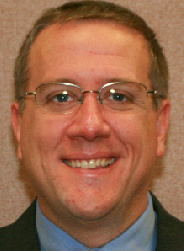As the first in a three-part series, this article explains why telehealth and sleep medicine are compatible…and why you may need to step back before moving forward in adopting telehealth approaches.
By Emerson M. Wickwire, PhD
From the time of the ancient Greeks until the 20th century, medicine was primarily practiced in real time and face-to-face. Time and place were fixed. If you had an ailment, you sought out a healer, even if this meant traveling a great distance. Or if you were fortunate or wealthy, a healer would visit you. Today, however, technological advancement has removed these boundaries, and healthcare delivery can now be remote and asynchronous.
Already, much patient care in sleep medicine takes place outside of traditional medical settings—this is the fundamental premise of telehealth. For our purposes, telehealth is simply leveraging technology to facilitate remote screening, education, assessment, diagnosis, treatment, documentation, and ongoing medical care. The three defining characteristics of telehealth are remote provision of services, asynchronous delivery, and automation.
Telehealth enables patients to learn about symptoms, assessment, diagnosis, and treatment options from the comfort of their own homes. Test results can be “stored and forwarded” between technician, physician, patient, and referring provider. Providers can deliver healthcare services over the telephone or through remote video-conferencing. And importantly, providers can automate decision-making as well as patient communication through validated technologies.
Although certain telehealth approaches are already in use in sleep medicine (eg, remote monitoring), there is no consensus or unified strategic approach regarding how best to further the adoption of telehealth in sleep. Even those who have a strong desire to begin a telehealth program, or even have developed a clear strategic vision, face challenges in implementation.
Telehealth Promises
Sleep medicine is particularly amenable to leveraging technology to improve patient care. Indeed, it seems that everyone involved in sleep medicine wants to catch the telehealth wave.
Patients seek the convenience and cost savings of fewer face-to-face encounters, instead preferring to communicate remotely for routine office encounters. Providers report, “I’m tired of explaining obstructive sleep apnea 20 times per day.” Payors have already adopted remote monitoring to ensure adherence with therapies. The public consumes hundreds of “sleep apps” for mobile devices.
 Telehealth Pitfalls
Telehealth Pitfalls
In spite of the evident rise of telehealth and its promise for the future, implementing a telehealth program is easier said than done.
As is the case with any organizational change initiative, the single biggest barrier to engaging in telehealth is lack of strategic vision and executive leadership. To develop a strategic vision in your organization, telehealth must be understood in context.
The major driving forces of 21st-century healthcare are improving health outcomes while reducing healthcare costs. Telehealth is simply one viable, and increasingly necessary, means to this end. Organizational leaders must develop and define a strategic approach to maximizing outcomes while minimizing resource utilization. Where can telehealth support this vision?
The second challenge to implementing telehealth is “bright shiny object syndrome.” Because of the novelty and ingenuity of many telehealth technologies, there is an inherent risk of wanting to adopt technology for its sake alone, at times even at the expense of your organizational strategy! The next time one of your team brings you a new app or software recommendation, ask how this tool would support the organizational mission and strategic vision. Technology has no inherent value to a business. The value of technology is determined only by the degree to which it supports the overall strategy and business objectives.
Finally, telehealth has not yet been widely adopted due to unclear and inconsistent reimbursement. A majority of states have passed or proposed legislation to define and regulate telehealth. Yet there is little clear financial incentive for most fee-for-service practices to adopt a robust approach to telehealth, unless they are situated in rural or remote areas. Further, most states do not permit patients to be in the comfort of their home, but instead must video-conference from a specified location. Reimbursement for real-time telemedicine is lower than for face-to-face encounters.
What Now?
The telehealth boom is upon us. In recent years and months, you’ve heard predictions, statistics, and summaries. Perhaps you’ve encountered specific technologies or know of start-up ventures. Early adopters have already employed remote patient screening, assessment, and education. Both open and closed healthcare systems have adopted HIPAA-secure patient communication systems. Remote monitoring of PAP adherence has become standard of care. All aspects of telehealth are common in self-funded, corporate healthcare. Yet for most traditional medical organizations, a great deal of ambiguity remains.
Perhaps counterintuitively, the first step to incorporating telehealth in your institution is not to step forward. Instead, step back to gain perspective. Review your strategic vision and define your organizational processes. Only then should you ask where technology can support your mission.
Strategy drives tactics, which drive technology. Not the other way around.
For more insight on telehealth, see Emerson Wickwire’s “7 Reasons Telehealth Will Grow in Sleep Medicine.“
___________________________________________________________
Stay tuned for part 2 the first week of May, which will discuss specific uses of telehealth in the sleep subspecialty and what to look for when selecting software. Part 3, which will publish online during the last week of May, will showcase early adopters of telehealth and what we can learn from them. (If you want to be featured as an early adopter, please e-mail [email protected].)
____________________________________________________________







